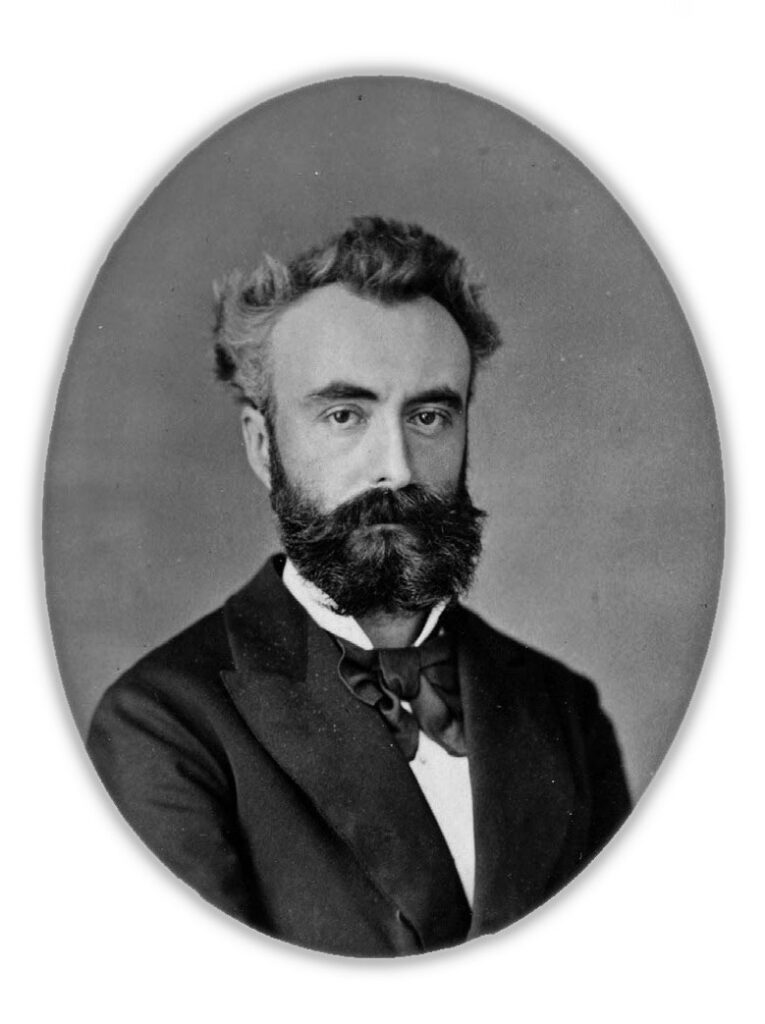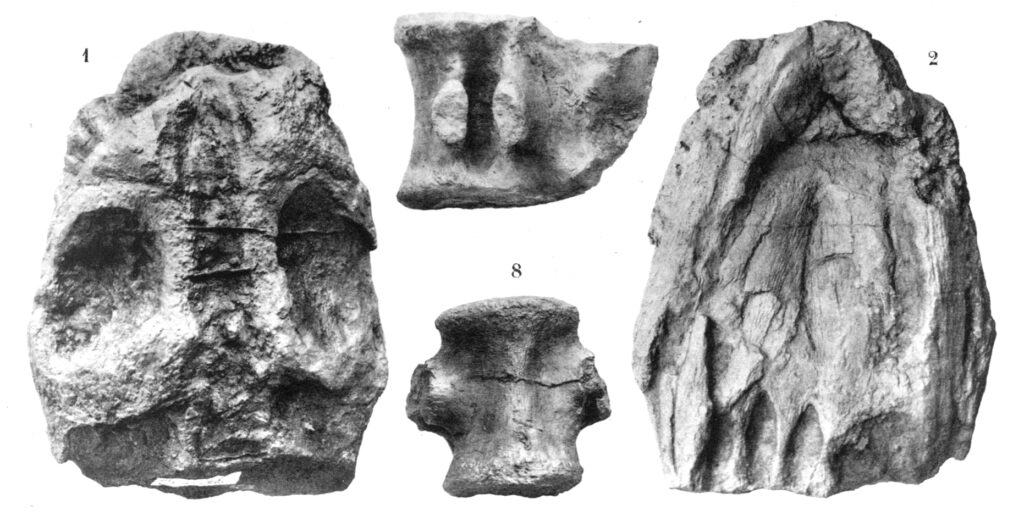
Lusonectes sauvagei, a plesiosaur from the Lower Jurassic of Portugal
In February 2025, I had the opportunity to study the holotype specimen of Lusonectes sauvagei (MG 33) in the collection of the Museu Geológico in Lisbon (Portugal). The genus is based on a poorly preserved skull found near Alhadas (Figueira da Foz, Coimbra district) in Portugal. The fossil derives from the São Gião Formation and is of Toarcian (Lower Jurassic) age.
The French palaeontologist Henri Émile Sauvage (1842-1917) provided a first description of the skull in his monograph ‘Vertébrés fossiles du Portugal. Contribution à l’étude des poissons et des reptiles du Jurassique et du Crétacique’ (Sauvage 1897–1898). He compared the specimen with several species that were then included in the genus Plesiosaurus (most of which are now separate genera, such as Microcleidus for Plesiosaurus homalospondylus) and concluded that the Portuguese skull is best identified as Plesiosaurus sp.
A detailed description of the specimen was published in 2012 by Adam Smith, Ricardo Araújo and Octávio Mateus. The team found a number of informative anatomical features, particularly in the palate, and established the genus and species Lusonectes sauvagei for the specimen MG 33. Unfortunately, the skull is incomplete and the dorsal side is very poorly preserved. However, the palatal side of the skull is very informative and allows to distinguish Lusonectes sauvagei from other plesiosaurs. In particular the posterior part of the palate shows some unusual traits. Adam Smith and team did a great job in identifying the anatomical features. Their paper, published in Acta Palaeotologica Polonica, is open access (the link is given below). During my first hand study I found some additional characters that can help to characterise Lusonectes and I hope to publish them soon.
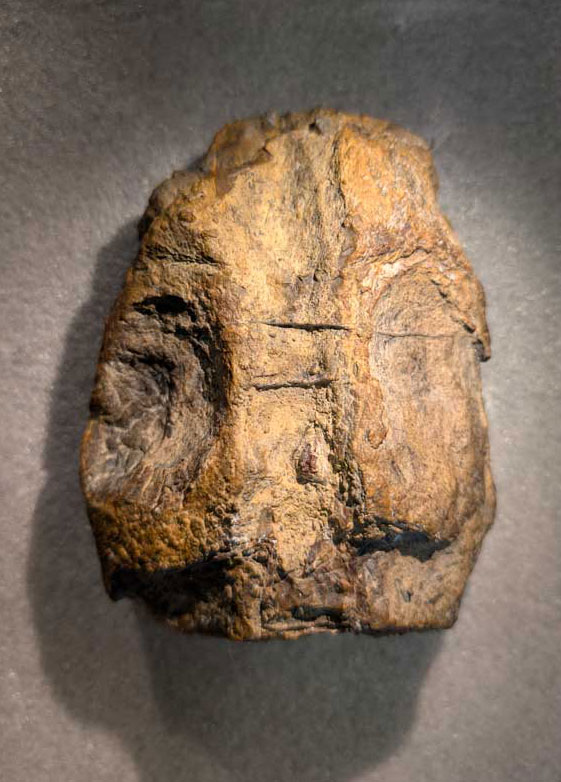
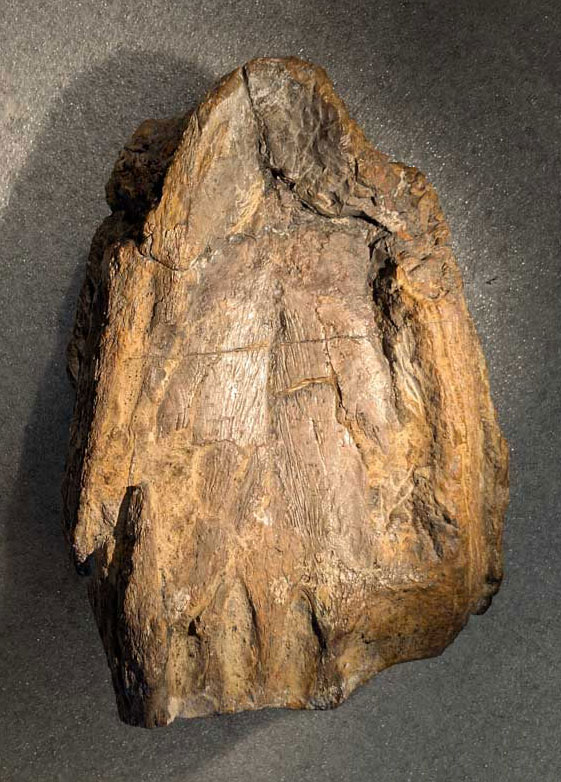
Plesiopharos moelensis - a second plesiosaur from Portugal
Lusonectes sauvagei was the first plesiosaur genus established from Portugal. A second genus, Plesiopharos moelensis, was described by Puértolas-Pascual et al. (2021). Plesiopharos is based upon an incomplete postcranial skeleton that comprises part of the axial skeleton, ribs, as well as limb and girdle elements (see illustration from Puértolas-Pascual et al. 2021). The specimen is housed in the Museu da Lourinhã in Lourinhã, Portugal. It was found near São Pedro de Moel (Leiria) in central west Portugal and derives from the Sinemurian Coimbra Formation of São Pedro de Moel. Plesiopharos moelensis is thus older than Lusonectes sauvagei.
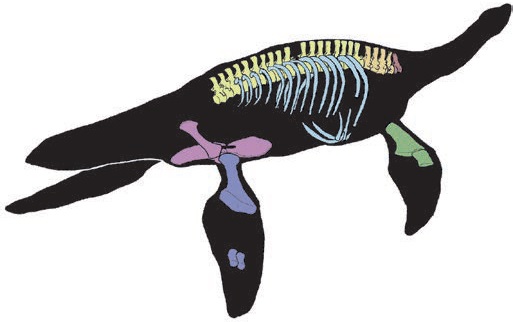
Sauvage, H.E. (1897–1898). Vertébrés fossiles du Portugal. Contribution à l’étude des poissons et des reptiles du Jurassique et du Crétacique. Memórias Commissão do Serviço Geológico de Portugal 1897–1898: 1-46.
Smith, A. S., Araújo, R., & Mateus, O. (2012). A new plesiosauroids from the Toarcian (Lower Jurassic) of Alhadas, Portugal. Acta Palaeontologica Polonica, 57: 257-266.
WebsourcesPortrait of Henri Émile Sauvage: Public domain. Link | Plesiopharos moelensis image: CC 4.0 licence. Link—The restudy of Lusonectes sauvagei is part of the grant project Global drivers of plesiosaur evolution during intervals of intense change in Mesozoic marine ecosystems. National Science Centre, Poland, Grant no. 2023/51/B/NZ8/00899 (awarded to Daniel Madzia, Institute of Paleobiology of the Polish Academy of Sciences).

